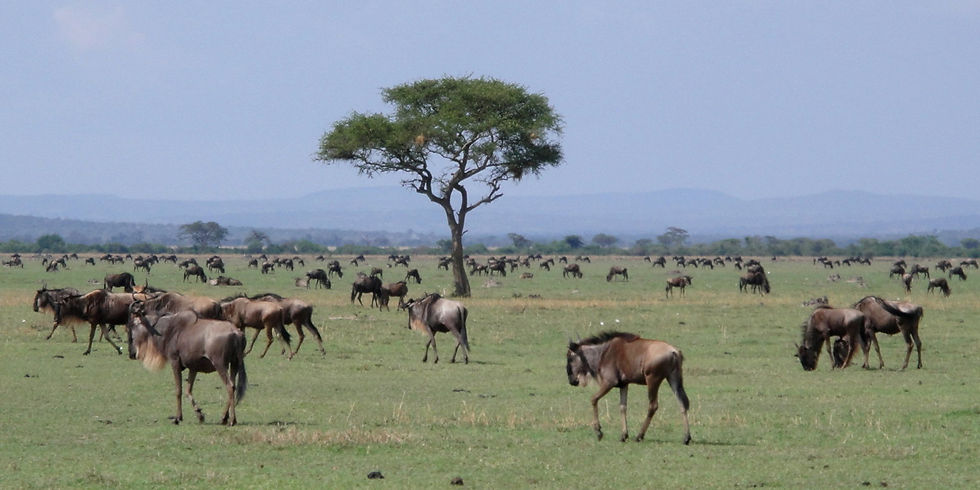
TANZANIA - Serengeti NP -
Annual Great Migration
The Serengeti National Park is famous for its annual migration of over 1.5 million white-bearded (or brindled) wildebeest and 250,000 zebra and for its numerous Nile crocodile and much more resident species.
The park covers 14,750 square kilometres (5,700 sq mi) of grassland plains, savanna, riverine forest, and woodlands. The park lies in northwestern Tanzania, bordered to the north by the Kenyan border, where it is continuous with the Maasai Mara National Reserve. To the southeast of the park is the Ngorongoro Conservation Area and the famous Ngorongoro Crater.
Tarangire National Park is also concerned by the gret Migration but Ngorongoro Crater isn't as most animals are trapped inside and can't get out.
BEST TIME to VISIT SERENGETI NP
BEST TIME to TRAVEL to TANZANIA
From June to September

Great Migration - Zebras

Great Migration - Zebras

Great migration - wildebeests

Great Migration - Zebras

Great Migration - Wildebeests

Great migration - wildebeests

Great Migration - Wildebeests

Great Migration - Wildebeests

Great Migration - Wildebeests

Great Migration - Wildebeests

Great Migration - Wildebeests

Great Migration - Wildebeests

Great Migration - Wildebeests

Great Migration - Wildebeests

Great Migration - Wildebeests

Great Migration - Wildebeests are the little dots all over the savana

Great Migration - wildebeests

Great Migration - wildebeests on the move

Great Migration - wildebeests

Great Migration - wildebeests

Great Migration - Zebras

Great Migration - Wildebeests

Great Migration - Zebras

Great Migration - Zebras

Great Migration - Zebras and elephants

Great Migration - Zebras

Great Migration - Zebras

Zebra running on the road

zebra

Great migration - Wildebeests

Great migration - Wildebeests

Great migration - Wildebeests are the little dots in the savana

Great migration - Wildebeests

Great migration - Wildebeest

Great migration - Wildebeests
And below, these predators don't migrate but are also involved in the great migration as this period is a real bonanza for them, allowing them to survive as they request their toll with numberous zebras and wildebeests killed during those great migration.

3 cheetahs resting under a tree

adult cheetah

young cheetah

leopard in a tree

leopard climbing on a tree

leopard on a tree looking for a snack

young lion with its perfect camouflage for grasslands

male lion isn't a big hunter : too big and not fast like the lionesses. So the lion wait often the prey is killed, and eat first. But the lion can bring its help for very large prey like giraffe or buffalos, climbing on their back.

young male lion

male lion resting

jackal won't kill a wildebeest or a zebra, but they wait their turn after the big cats left the carcasse

Vultures are at the utimate step : cleaning completely the carcasses after they were killed and eaten by the others predators

hyenas are not only scavengers: they can also kill large animals, but they like easy meals, so they steal prey killed by big cats, when they can

spotted hyenas - a herd of hyenas can steal a prey to a lion for instance

spotted hyena

lioness

cheetah looking for prey

elegant cheetah

cheetah

cheetah - the fastest animal on land

cheetah

2 young cheetahs

3 cheetahs: the mother and 2 big wolf cubs who stay 2 years with her to learn survival skills

Leopard in a tree - It's one of the famous "Big Fives" is the more difficult to spot

the elusive leopard

Lion and lioness

lion male

crocodile

nile crocodile take their toll when the wildebeests are crossing the rivers during their migration